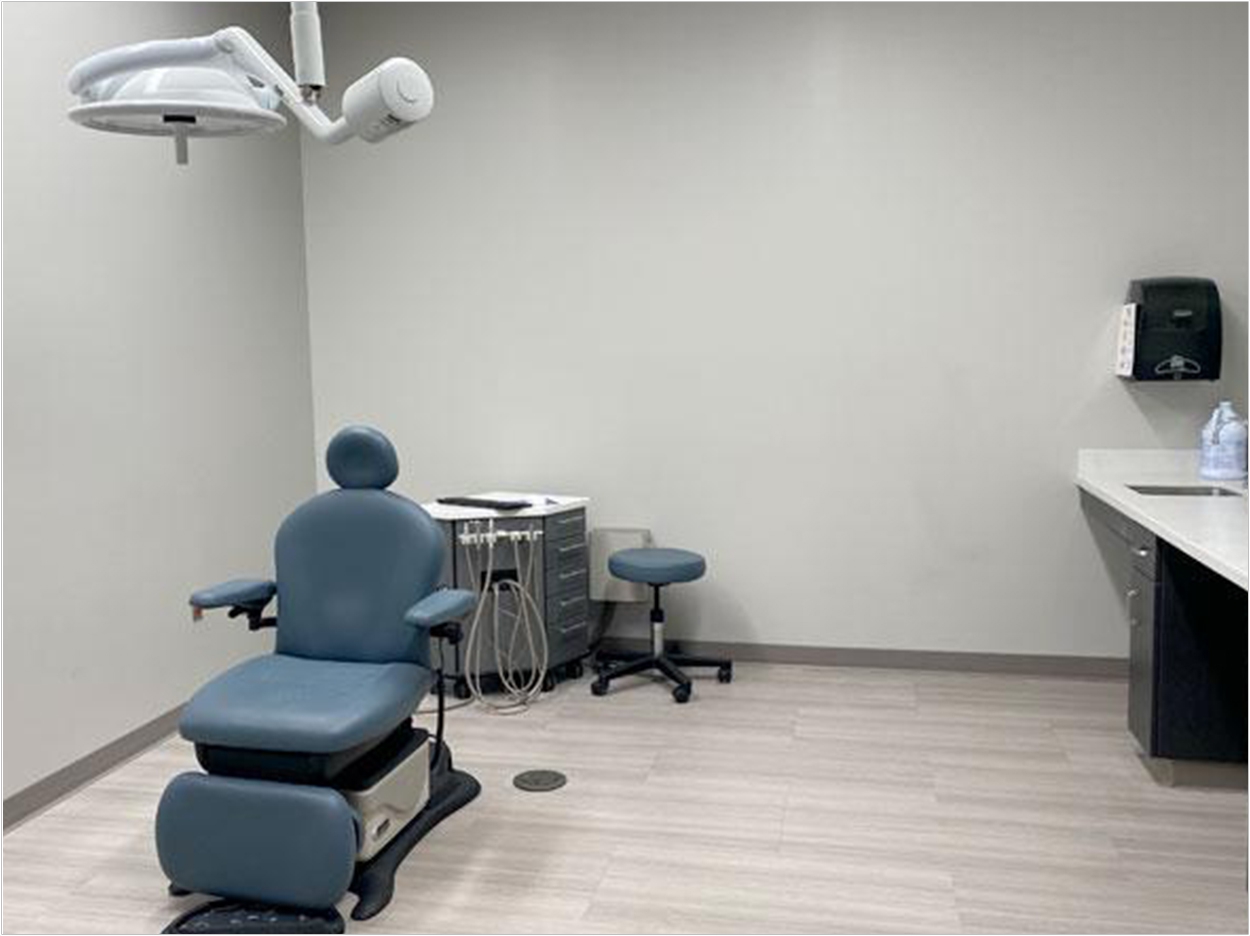
The Creighton University School of Dentistry has used a $100,000 federal grant to construct a pair of negative pressure rooms at the dental school to reduce the risk of viral transmission during treatment.
A negative pressure room controls airflow so all viral presences are captured and expelled. The room adds to precautions already taken at the school, which include the installation of two Needlepoint Bipolar Ionization air disinfectant systems.
“The reason we asked for money for negative pressure rooms is so that we can treat patients who we know are COVID positive,” said Mark Latta, DMD, MS, dean of the school, who applied for the grant.
“We would ordinarily defer elective dental treatment until they were feeling better, or were no longer positive, but we have patients who may have an urgent need. They’re in pain, and we can’t wait days or weeks to treat their problem,” said Latta.
The rooms are intended to treat people who are already patients at the school, some of many years standing, who have been diagnosed COVID positive, Latta said. They aren’t intended as tools to recruit new patients, although Latta fully expects that the number of existing patients diagnosed with COVID will increase.
“One of the interesting facts is that 60% of our patients come from those ZIP codes in Douglas County where 90% of the positive patients have been discovered,” Latta said. “So we know that we may end up with patients who we have been serving for years, who are continuing care patients, who will have COVID and are infectious but who we still have an ethical obligation to treat.”
The opening of the two negative pressure rooms will make that possible, Creighton said.
Joseph Franco Jr, DDS, chief dental officer at the School of Dentistry, said the rooms deploy exhaust systems that draw the air out of the room and deposit it outside the building while drawing clean air in from corridors and hallways.
“That’s why the term ‘negative’ is used,” Franco said. “The air being pushed out of the room exceeds the air being drawn in. That removes any kind of aerosol that’s in the air, any kind of bacteria, flushes it out and pushes it to the outside.”
The project is supported by funding from the Coronavirus Aid, Relief and Economic Security Act (CARES Act) from the US Department of Treasury and the Nebraska Department of Health and Human Services, CFDA Number 21.019.
Related Articles
Dentists Advised to Mind “Settle Time” After Generating Aerosols
Dental Aerosol Capture System Provides Post-COVID-19 Protection
COVID-19 Takes Its Toll on Dentistry in Pakistan Too



